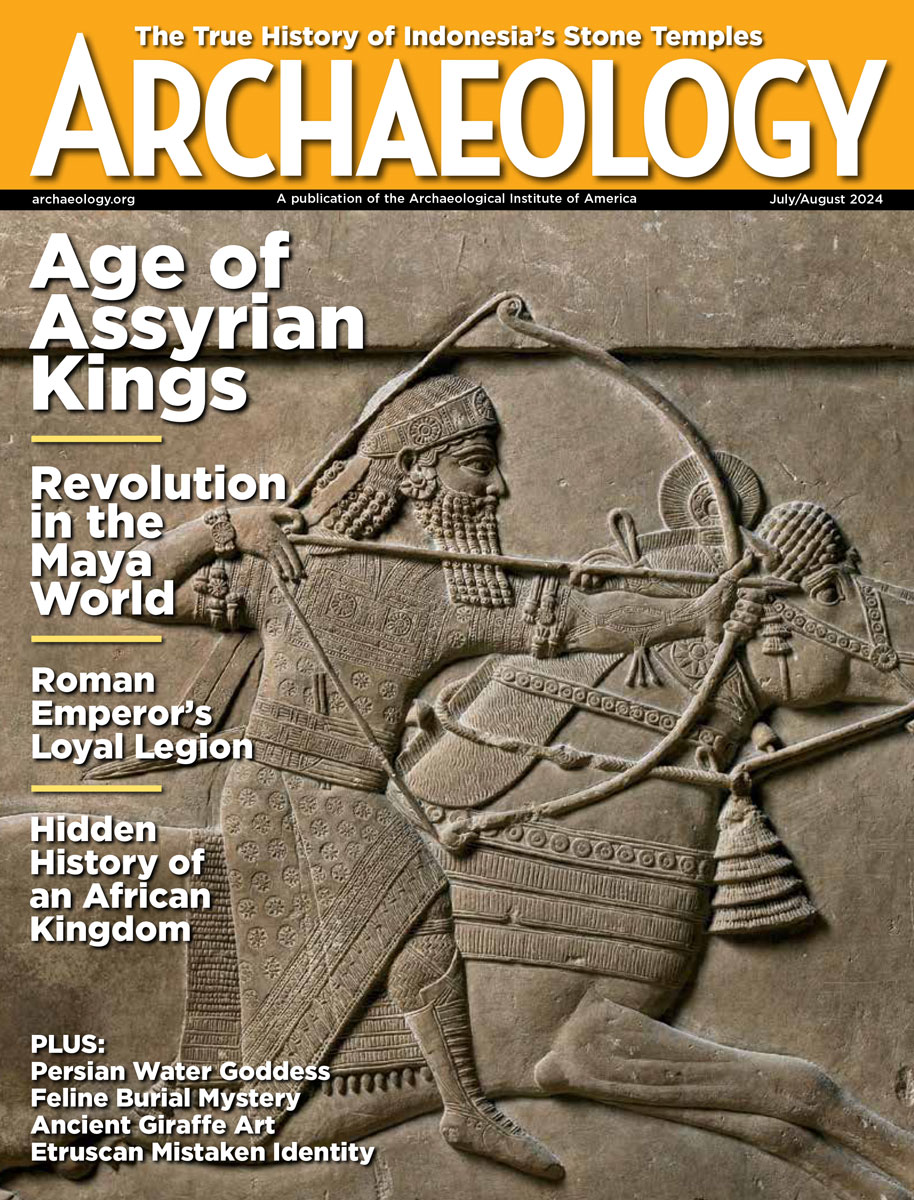

| |
| Does Newly Excavated Buddhist Temple Provide A Missing Link? | April 4, 2001 |
| by P.K. Mishra | |
![[image]](https://archive.archaeology.org/news/deorkothar/jpegs/deor1.jpeg) Major Stupa under excavation (Courtesy P.K. Mishra) |
The Buddhist firmament is abuzz with word of amazing discoveries at the newly excavated site of Deorkothar in Madhya Pradesh, India. Situated on the ancient Dakshinapath (southern trade route), Deorkothar lies between Bharhut and Sanchi, two major Buddhist centers established in the third century B.C. It is surprising that Alexander Cunningham, the nineteenth-century doyen of Indian archaeology who did extensive work in the area, missed the site. Excavations at Deorkothar--which seems to predate the late Mauryan-Sunga period (fourth through first centuries B.C.), when most early stupa (temple) complexes were built--promise to throw light on the genesis and spread of Buddhism in Central India, providing missing links in the history of Buddhist art and architecture.
The Deorkothar complex, nearly two miles in extent, boasts four brick stupas, the most ever found at a site of this period. The varying sizes of bricks used in construction point to an early date. Such motifs as twirling lotus, conical lotus bud, and a simple flower pot on a three-tiered pedestal--the carving of which foreshadows early Buddhist art--can be seen on the railing posts of the largest brick stupa, which rises to a height of nearly 30 feet. The stencil-cut effect of the friezes, along with their simple ornamentation and the paucity of human and animal figures, suggests these are early attempts at stone railing art. It would therefore seem that the stupa at Deorkothar was built before the famous early free-standing stupa at Sanchi.
![[image]](https://archive.archaeology.org/news/deorkothar/jpegs/deor2.jpeg)
Deorkothar's Minor stupas (Courtesy P.K. Mishra) |
The site of Deorkothar also comprises monasteries, a water channel system, an ancient pathway, and 30 stone stupas, many of which contained sherds of high quality northern black polished ware, the pottery of everyday use between 700 and 300 B.C. Such sherds are absent from Sanchi, further indicating that Deorkothar predates that site.
Dotting the site of Deorkothar are 63 rock-shelters, many with art dating to the first century B.C., that were likely used by monks for meditation. One painting depicts a stupa and a tree surrounded by a railing. Others show social or hunting scenes; men, women, and animals; weapons; and designs.
![[image]](https://archive.archaeology.org/news/deorkothar/thumbnails/deor4.gif) |
Left, railing pillars [LARGER IMAGE] Right, twisting lotus carved on railing pillar [LARGER IMAGE] (Courtesy P.K. Mishra) | ![[image]](https://archive.archaeology.org/news/deorkothar/thumbnails/deor3.gif) |
Excavation also recovered pieces of a pillar with a six-line inscription in Brahmi, the precursor to modern Indian alphabets, the earliest examples of which date to the rule of the Mauryan emperor Ashoka (273-232 B.C.). Although the pillar bears the trademark Mauryan polish, it is made not of the Chunar sandstone characteristic of Ashokan sculpture, but of local sandstone. Also found at the site were pottery, pieces of stone caskets and bangles with exquisite polish, some copper fragments, a lead strip coiled ear stud, iron nails and clamps, few coins (one punch-marked), pieces of terra-cotta toys, and beads. Worthy of particular mention are several pieces of Mauryan polished chattra (the multi-tiered "umbrella" at the top of a stupa) with evidence of radial ribs. To the west of the main stupa, iron slag, a lump of iron ore, and white nodules of lime indicate the presence of an iron-smelting furnace nearby.
The ancient Buddhist text Divy Adanam speaks of the death and destruction brought about by Pushyamitra Sunga, who ruled in the first quarter of the second century B.C., in a bid to glorify Hinduism. During his reign, Buddhist monuments were wantonly destroyed. Although archaeological evidence is meager in this regard, it seems likely that the Deorkothar stupa was destroyed as a result of Pushyamitra Sunga's fanaticism. The exposed remains at Deorkothar bear evidence of deliberate destruction datable to his reign. The three-tiered railing is damaged; railing pillars lie, broken to smithereens, on stone flooring. Twenty pieces of pillar have been recovered, each fragment itself fractured. The site offers no indication of natural destruction.
P.K. Mishra (Archaeological Survey of India) discovered Deorkothar in 1982 with Ajit Singh and returned to excavate the site in 1999.
© 2001 by the Archaeological Institute of America archive.archaeology.org/online/news/deorkothar/ |
Advertisement

Advertisement






